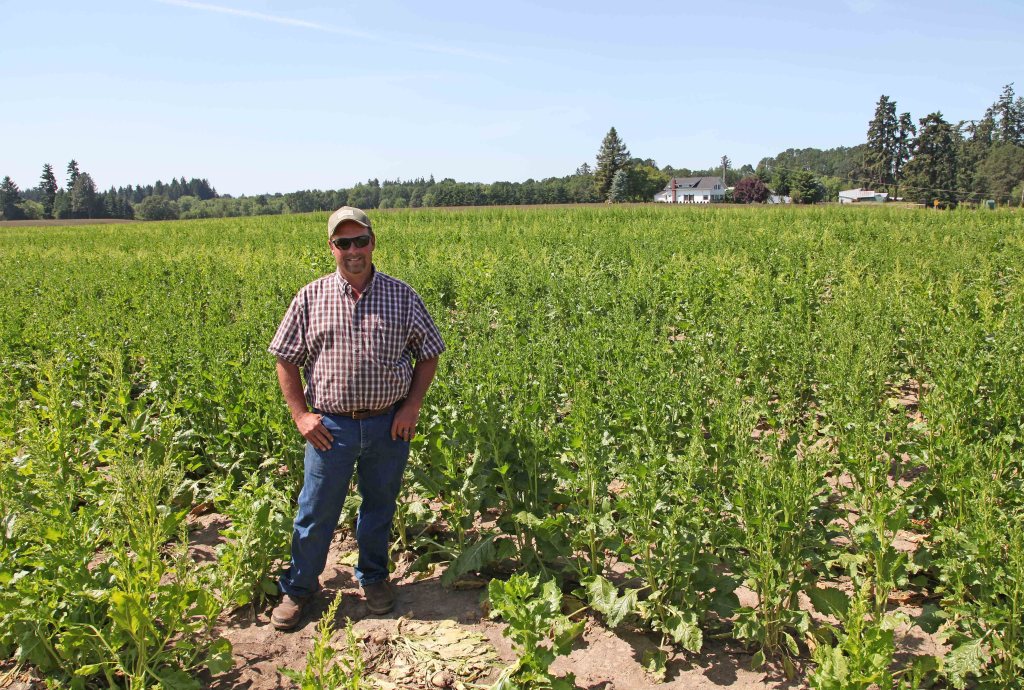PORTLAND, Ore. — Before residents in southern Oregon overwhelmingly voted to ban genetically modified crops last month, farmers negotiated for months with a biotech company that grows engineered sugar beets near their fields.
Their goal was to set up a system to peacefully coexist, an online mapping database of fields to help growers minimize cross-pollination between engineered and non-engineered crops.
But the effort between farmers and Swiss company Syngenta failed, leading to the ban.
Last October, Oregon Gov. John Kitzhaber directed the state’s Department of Agriculture to undertake something far more ambitious than that failed mapping effort – map GMO field locations across the entire state and establish buffer zones and exclusion areas for GE crops.
The move was spurred by several instances of genetic contamination in the region that rendered non-engineered crops unsellable on the export market.
If the mapping goes ahead, Oregon would be the first state to map fields and mandate preventive measures for modified crops. Advocates say Oregon could become a model for the rest of the nation.
The failed mapping effort in southern Oregon illustrates the challenges in reaching a consensus on GMO mapping amid mutual mistrust, a dearth of regulations and intense consumer attention.
A U.S. Department of Agriculture committee has recommended informal neighbor farmer agreements and an insurance system to pay for damages resulting from GMO contamination. But organic farmers are pushing for more disclosure, formal prevention measures and a system to hold GE growers liable for cross-pollination.
In Oregon, where over 200 crops are cultivated on nearly 24,000 farms, most crops do not have genetically modified counterparts, as only a handful of GE crops such as corn, alfalfa and sugar beets are permitted in the U.S.
Cross-pollination can occur when two crops within the same species flower simultaneously in nearby fields and pollen is carried from one to another via wind, insects, machines or human activity. Genetic engineering is prohibited in U.S. organic crops and many countries restrict imports of engineered products.
“There’s this need, a perceived need and real need in some markets, that they need zero contamination. And that is very difficult to achieve,” said Carol Mallory-Smith, professor of weed science at Oregon State University.
Already, dozens of seed associations across the nation – organizations for farmers who grow crops for seed – do mapping, also called pinning, and set isolation distances among crops to limit cross-pollination.
Some biotech companies participate in such mapping. But the efforts are voluntary and spotty, with locations and dates of planting available only to fellow growers, not officials or the general public.
Monsanto and other biotech outfits that hold patents to GE seeds resist publicly disclosing GMO field locations for competitive reasons. They claim farmers already coexist throughout the U.S. and more monitoring isn’t needed.
They are backed by farmers who plant GMO crops and worry that mapping could lead to crop sabotage and an outright ban on all GMO cultivation, regardless of the likelihood of contamination.
“More mapping would be redundant; we’re already doing it internally, we all work together with other farmers,” said Robert Purdy, who grows GE sugar beets for seed in the Willamette Valley. “If mapping were made public, nothing could stop people from pulling out those sugar beet plants.”
The company that contracts with Purdy for the seeds is a member of the Willamette Valley Specialty Seed Association, which maps more than 1,200 fields as part of a pinning system in northwestern Oregon – meaning Purdy can coordinate what to grow and where with his neighbors.
But organic farmers and other advocates say a mandatory mapping and monitoring system that covers all regions of the state and the nation is badly needed to retain crop and seed purity.
Send questions/comments to the editors.



Success. Please wait for the page to reload. If the page does not reload within 5 seconds, please refresh the page.
Enter your email and password to access comments.
Hi, to comment on stories you must . This profile is in addition to your subscription and website login.
Already have a commenting profile? .
Invalid username/password.
Please check your email to confirm and complete your registration.
Only subscribers are eligible to post comments. Please subscribe or login first for digital access. Here’s why.
Use the form below to reset your password. When you've submitted your account email, we will send an email with a reset code.